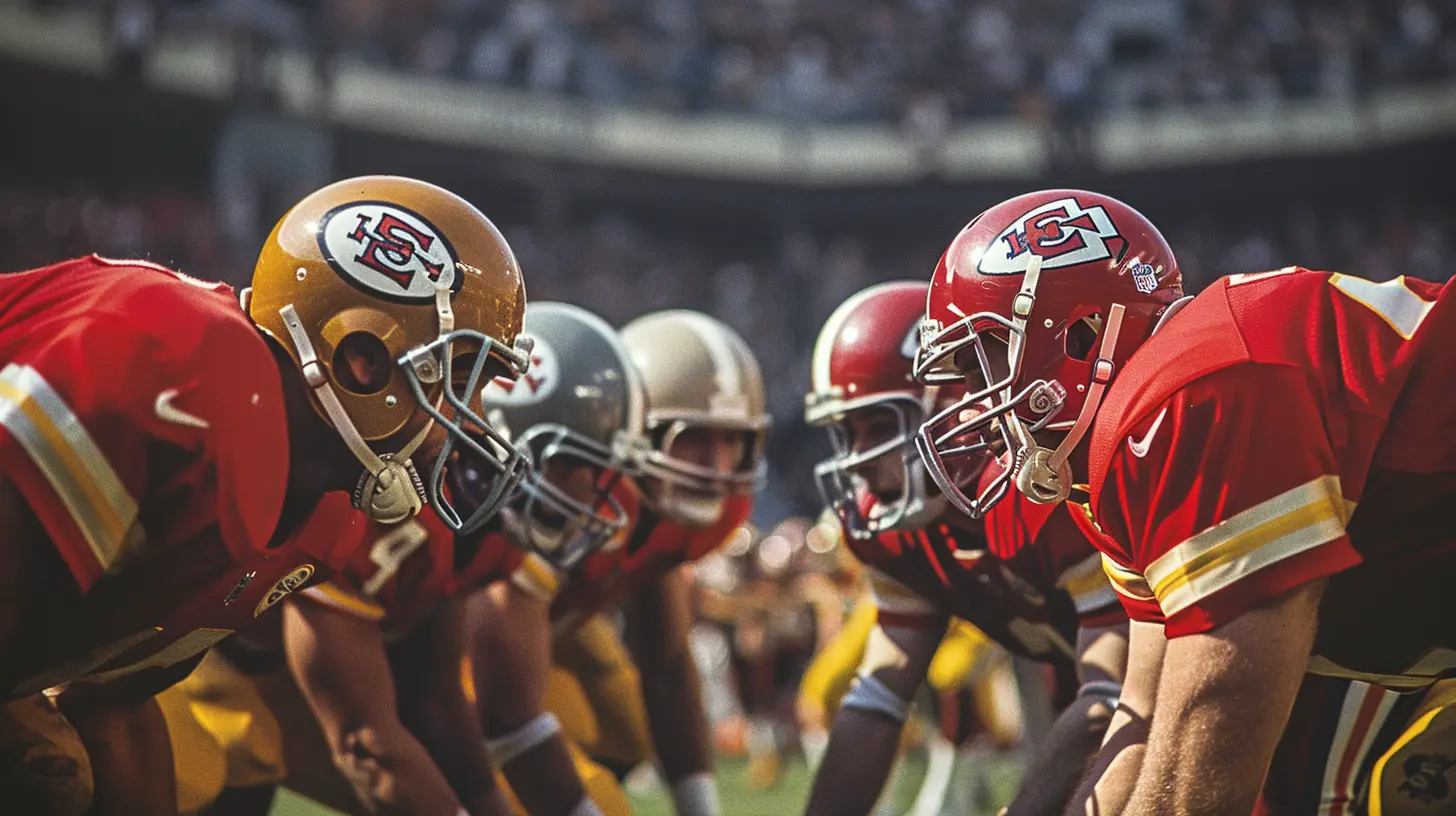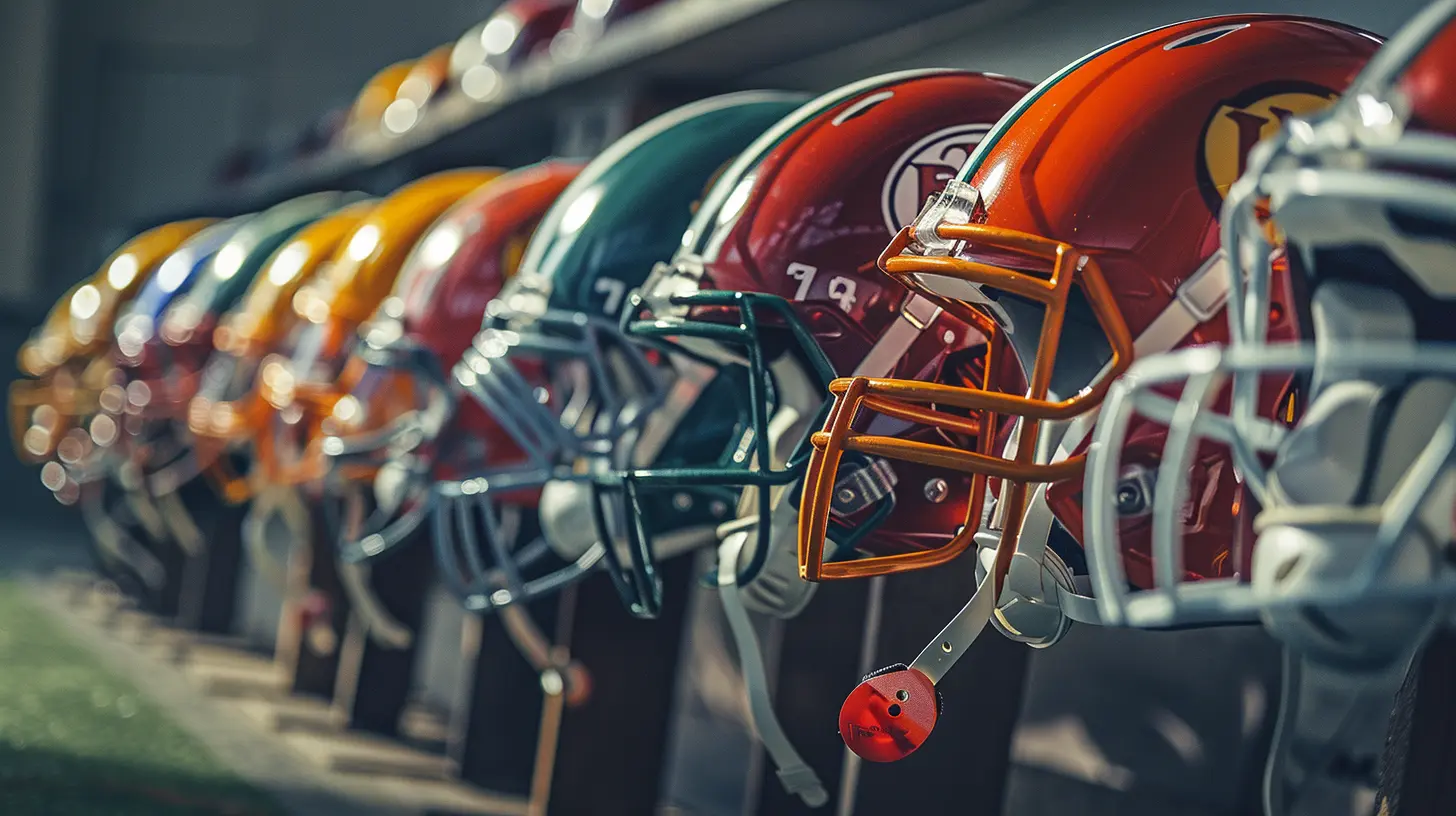The Evolution of Draft Strategies Over the Decades
9 October 2025
Alright sports fans, buckle up! We’re diving into a time machine today—no DeLorean needed—and heading back to see how draft strategies have transformed over the decades. From the old-school “pick the biggest guy” approach to today’s data-driven wizardry, the journey is nothing short of fascinating.
Whether you’re a fantasy football fanatic, a die-hard NBA junkie, or just someone who loves sports history, you're going to love this. Let’s break down how team draft strategies have evolved like Pokémon since the early days of professional sports drafts. Trust me, this is a wild ride full of surprising turns, bold moves, and a sprinkle of strategy magic.
What Exactly Is a Sports Draft?
Let’s start with the basics. A sports draft is when pro teams take turns picking eligible players—usually from college or overseas—to join their squad. It’s kind of like picking teams for dodgeball in gym class, except billion-dollar franchises are involved, and the stakes are through the roof.But here’s the twist: drafting isn’t just about choosing talented players. It’s about finding the right fit, playing the long game, and sometimes, rolling the dice on potential. And how teams make those decisions has changed—big time.
The 1940s-1950s: The “Eyeball Test” Era 🧐
Ah, the simpler times. Back in the day, scouting was more about gut feelings and less about spreadsheets. Coaches and scouts relied on what they saw with their own eyes. If a guy was big, fast, and had a strong handshake? He was probably getting picked.Stat sheets? Barely a thing.
Film analysis? Not really.
Combine workouts? Not even close.
Key Features of This Era:
- Minimal data or analytics- Heavy reliance on word-of-mouth and personal observation
- Sometimes scouts didn’t even see prospects play live 😱
Can you imagine making a million-dollar decision based on a phone call or one game? That’s what teams were doing! Talk about rolling the dice...
The 1960s-1970s: The Rise of the Scout Network 🕵️
As leagues expanded and the talent pool grew, teams started to realize... maybe we need a better system. So, they hired more full-time scouts and started building networks across the country.This era still featured a lot of gut-based decisions, but scouting became more structured. It was kind of like switching from drawing maps by hand to using a compass.
Draft Strategy Changes:
- Teams began collecting player stats more consistently- Scouts traveled more, saw more games, and kept detailed notes
- Positional needs started to influence selections
One of the biggest shifts? Teams began thinking more about the future. They weren’t just drafting the best player available—they were starting to think about team building, chemistry, and long-term plans.
The 1980s: Enter the Data (Kind Of) 💻
Now we're cooking with gas. The 80s brought a wave of innovation—and not just in fashion. Teams started using computers to track player stats, injuries, and performance metrics.Okay, okay, the tech was a bit primitive by today’s standards. But make no mistake, this was the first taste of analytics creeping into the draft war rooms.
Notable Developments:
- More emphasis on college performance and measurable stats- Early use of computer programs to rank prospects
- Physical attributes (40-yard dash, vertical leap) became big talking points
This is also when the NFL Combine started to become a big deal. Suddenly, running a blazing-fast 40-yard dash could skyrocket a player’s draft position. And you better believe teams took note.
The 1990s: Mock Draft Mania and Media Influence 📺
Say hello to Mel Kiper Jr. and the golden age of mock drafts. With the expansion of sports media, fans got more involved in the draft process. TV broadcasts, expert analysis, and round-the-clock coverage made the draft an event.How This Impacted Draft Strategy:
- Teams became more aware of public perception- Pressure to pick “fan-favorite” players increased
- Agents started coaching players on how to ace interviews, workouts, and media appearances
And you guessed it—teams started playing mind games too. Smoke screens became the name of the game. Leaking fake interest in a player to trick other teams? Classic 90s draft move.
The 2000s: The Analytics Revolution 💡
Here’s where things get science-y. Inspired by the "Moneyball" movement in Major League Baseball, teams across all sports got serious about numbers. We’re talking advanced stats, efficiency ratings, player comparisons, and predictive modeling.Basically, if you weren’t using analytics by the late 2000s, you were getting left behind.
Modern Draft Tactics:
- Teams use algorithms to project player success in pro leagues- Injuries and durability stats now weigh heavily in decisions
- Psychological profiling and cognitive tests became standard
You know those charts showing the value of each draft pick? Yeah, they started popping up now. It wasn’t just about picking good players—it was about getting good value.
2010s: Positional Value and Trade Mastery 🔄
This is when things got really strategic. Rather than just grabbing the best talent available, teams began to maximize positional value. For example, in the NFL, quarterbacks and elite pass rushers skyrocketed in importance.In the NBA? Teams started prioritizing three-point shooting and switchable defenders. In MLB? Young, controllable arms won the day.
Trade Strategy Tactics:
- Trading down to gain more picks became trendy- Trading up for a "can’t miss" player wasn’t uncommon
- Teams obsessed over value charts, cap space, and player contracts
The 2010s also saw an explosion in draft-day trades. Some teams treated the draft like the stock market. Buy low, sell high, and never let emotions cloud your judgment.
2020s: The Era of Hyper-Intelligence 🧠
Welcome to the future, where draft rooms look like Silicon Valley startups. Artificial intelligence, biometric data, and real-time simulations are now part of the process.What does that mean?
- Teams can simulate a player’s career arc based on thousands of data points
- Virtual reality is used in prospect training and evaluation
- Draft picks are ranked by probability of success, not hype
And don’t even get me started on social media. Teams scour players’ Twitter and Instagram accounts to gauge maturity, leadership, and yes—even spelling and grammar.
The Changing X-Factors in Draft Strategy
Over the decades, we’ve seen several key X-factors shape draft decisions. Let’s break a few of them down:1. Injuries and Durability
Back then? A broken leg might get overlooked. Today? Teams have full medical histories, MRI scans, and recovery timelines before making a move.2. Off-Field Behavior
Character matters more than ever. Teams invest millions in background checks and psychological profiles to avoid PR disasters.3. Versatility and Scheme Fit
More coaches now tailor systems to their players—but ideally, they want someone who can handle multiple roles. Play three positions? You're golden.4. Rookie Contract Value
With salary caps and luxury taxes in place, getting a star on a rookie deal is like finding a unicorn. It’s why strategy now includes financial projections, not just physical ones.The Fantasy Draft Effect
Let’s not overlook how fantasy sports have influenced the way fans (and some front offices) think.Fantasy players are obsessed with value, position scarcity, and bye weeks. That mindset has crept into real drafts. GMs want to “win” the draft, not just fill a roster. They want steals. They want upside. They want the next Tom Brady—who went in the sixth round, remember?
Fun Draft-Day Moments That Prove Strategy Isn’t Everything
Sometimes, no matter how smart your strategy is, the unexpected happens:- The Portland Trail Blazers drafted Sam Bowie over Michael Jordan in 1984. Ouch.
- The Cleveland Browns passed on Carson Wentz and Patrick Mahomes. Double ouch.
- Tom Brady went 199th overall. Every team passed on him… multiple times.
These moments are a reminder that even with all the tech, scouting, and strategy, drafting is still part science, part art, and a sprinkle of good ol’ fashioned luck.
Final Thoughts: What’s Next for Draft Strategy?
As we look ahead, draft strategy is only going to get more layered. Think AI making live trade suggestions. Think virtual combine with global participants. Think DNA breakdowns (okay, maybe not… yet).But one thing will never change—the thrill. Whether you’re a GM in a fancy suit or a fan with a snack-stained jersey screaming at your TV, the draft will always be about hope. Hope that this pick? This is the one that changes everything.
And who doesn’t love a good Cinderella story?
all images in this post were generated using AI tools
Category:
Draft PicksAuthor:

Onyx Frye
Discussion
rate this article
1 comments
Solenne Brooks
From flip phones to smartphones, draft strategies have come a long way! Who knew analytics could make couch potatoes into armchair GMs? Just don’t let your cat pick the team!
October 27, 2025 at 12:22 PM

Onyx Frye
Thanks for your comment! It's fascinating to see how technology and analytics have transformed draft strategies, turning anyone into a potential GM—though I agree, leave the team choices to the humans!


